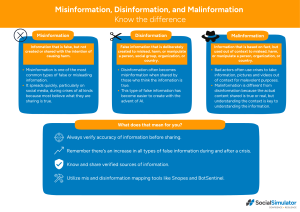Information spreads quickly, and so does false information. During a crisis, it’s harder than ever to separate fact from fiction, and fiction from half-truth. Understanding 3 different types of misleading content is essential for dealing with it effectively.
False content shared without harmful intent. Often spread by people who believe it's true.
This type of content is shared by often well-meaning individuals who think they’re helping. For example, someone might repost an outdated evacuation notice or fake medical advice without realising it’s incorrect. While not malicious, misinformation can still lead to confusion and poor decision making in high-pressure situations.
Deliberately fabricated or manipulated content, designed to mislead, deceive, or manipulate audiences.
This is the most dangerous type of misleading content. It may be crafted by bad actors, bots, or coordinated campaigns seeking to exploit a crisis for political, financial, or ideological gain. Examples include fake news stories, deepfakes, or hoaxes designed to cause panic or create division.
Genuine information used out of context to cause harm, damage reputations, or cause distrust.
It’s not fake but it is weaponised. A good example would be the selective release of personal emails or medical records to embarrass someone or take statements out of context. Malinformation will damage reputations, fuel conspiracy theories, or erode public trust.
Misleading content doesn’t just confuse people. It can lead to dangerous actions, overwhelm emergency response systems, or provoke unnecessary fear.
Understanding the differences between misinformation, disinformation, and malinformation equips you to:
Download our guide to find out more
